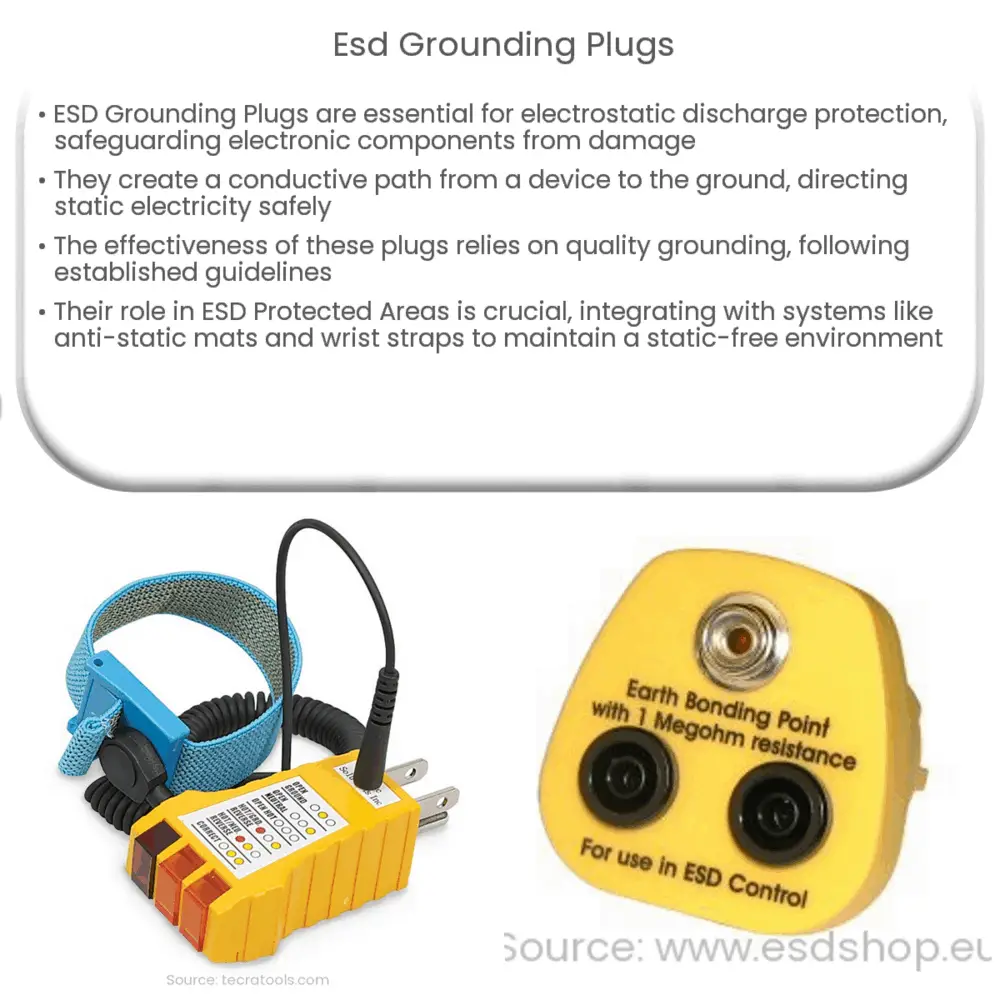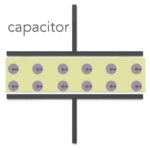Explore the vital role of ESD Grounding Plugs in preventing electrostatic damage to electronics in our comprehensive guide.

Introduction to ESD Grounding Plugs
Electrostatic Discharge (ESD) is a rapid flow of electrical charge between two objects caused by contact, an electrical short, or dielectric breakdown. This sudden charge transfer can cause a variety of issues, such as damage to sensitive electronic components, sparks that may cause explosions in flammable environments, and even physical harm to people. That’s where ESD Grounding Plugs come into the picture.
ESD Grounding Plugs are a critical component of any comprehensive electrostatic discharge protection strategy. They are designed to provide a safe path for the dissipation of electrostatic charges, thus reducing the risk of damage caused by ESD. They play a significant role in workplaces like electronics manufacturing, where static electricity can cause serious damage to sensitive components.
Understanding the Functioning of ESD Grounding Plugs
At its core, an ESD grounding plug works by creating a conductive path from a device or an ESD protected area (EPA) to the ground. This path allows static electricity to flow safely to the ground, preventing the buildup of charges that could lead to an ESD event.
- The Plug Body: The body of the plug is often made from conductive materials like copper or brass. This allows the plug to conduct electricity effectively, ensuring a smooth flow of static charges from the device or EPA to the ground.
- The Grounding Wire: Connected to the plug body is the grounding wire, which forms the physical path for the electricity to flow to the ground. This wire is often coated in a non-conductive material for safety purposes, ensuring that the wire can safely handle the electricity without risk of electrical shock or heat generation.
The functioning of an ESD grounding plug is therefore quite straightforward. It simply provides a safe, controlled path for static electricity to flow to the ground, protecting sensitive electronic components from potential damage caused by static electricity.
The Importance of Proper Grounding
The effectiveness of an ESD grounding plug is directly tied to the quality of the grounding. A proper ground ensures a direct, low resistance path to the Earth, which is essential in efficiently dispersing the static charge. Thus, installing and maintaining a quality grounding system is critical in preventing ESD-related damages.
Proper grounding is achieved by following established guidelines, such as those put forth by the Electrostatic Discharge Association (ESDA). These guidelines emphasize factors like the type of grounding conductor used, the location of the grounding point, and the resistance of the grounding system.
Implementing ESD Grounding Plugs in ESD Protected Areas
Implementing ESD grounding plugs in an ESD Protected Area (EPA) involves more than just plugging them into devices. It requires a systematic approach that ensures all components of the EPA are appropriately grounded. This often includes anti-static mats, ESD-safe workbenches, and even anti-static wrist straps for employees. Each of these items is equipped with a grounding plug, thus forming an interconnected system that helps in maintaining a static-free environment.
- Anti-static Mats: These mats are designed with a conductive material that helps dissipate static charges. They are usually connected to the ground using an ESD grounding plug.
- ESD-safe Workbenches: These workbenches are designed to reduce the generation of static electricity. They are also connected to the ground, typically through a grounding plug, to ensure any generated static charge is safely dissipated.
- Anti-static Wrist Straps: These straps are worn by workers handling sensitive electronic components. They are connected to the ground via an ESD grounding plug, ensuring that any static charge on the person is safely directed away from the sensitive components they are handling.
The interconnectivity of these grounding systems underscores the importance of ESD grounding plugs. They provide a straightforward and effective means to ensure that every part of an EPA is properly grounded, drastically reducing the risk of ESD-related damage.
Conclusion
ESD Grounding Plugs play a pivotal role in protecting sensitive electronic equipment from potentially catastrophic ESD events. By providing a safe and efficient pathway to ground for static electricity, they help maintain the integrity of electronic components, enhance safety in the workplace, and reduce the costs associated with ESD-related damages. Furthermore, their role extends beyond individual devices, contributing to the effectiveness of comprehensive grounding systems in ESD Protected Areas.
Whether in an electronics manufacturing plant or a hobbyist’s garage, the proper use of ESD grounding plugs is essential for anyone working with electronics. By understanding their function and importance, individuals and businesses can better protect their equipment and ensure their operations continue smoothly and without interruption due to ESD events.



